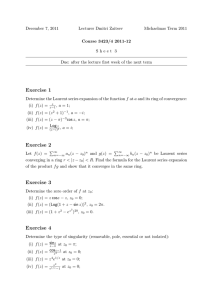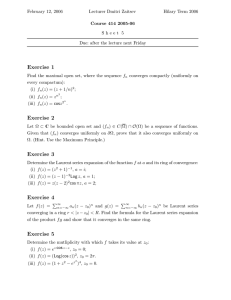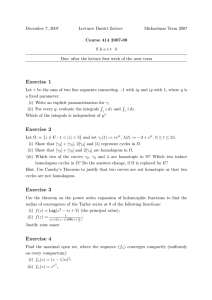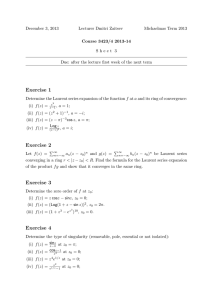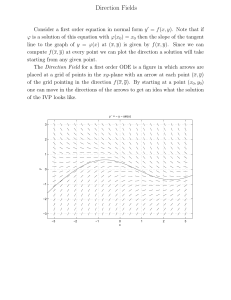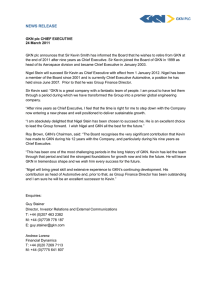December 10, 2009 Lecturer Dmitri Zaitsev Michaelmas Term 2009 Course 3423/4 2009-10
advertisement
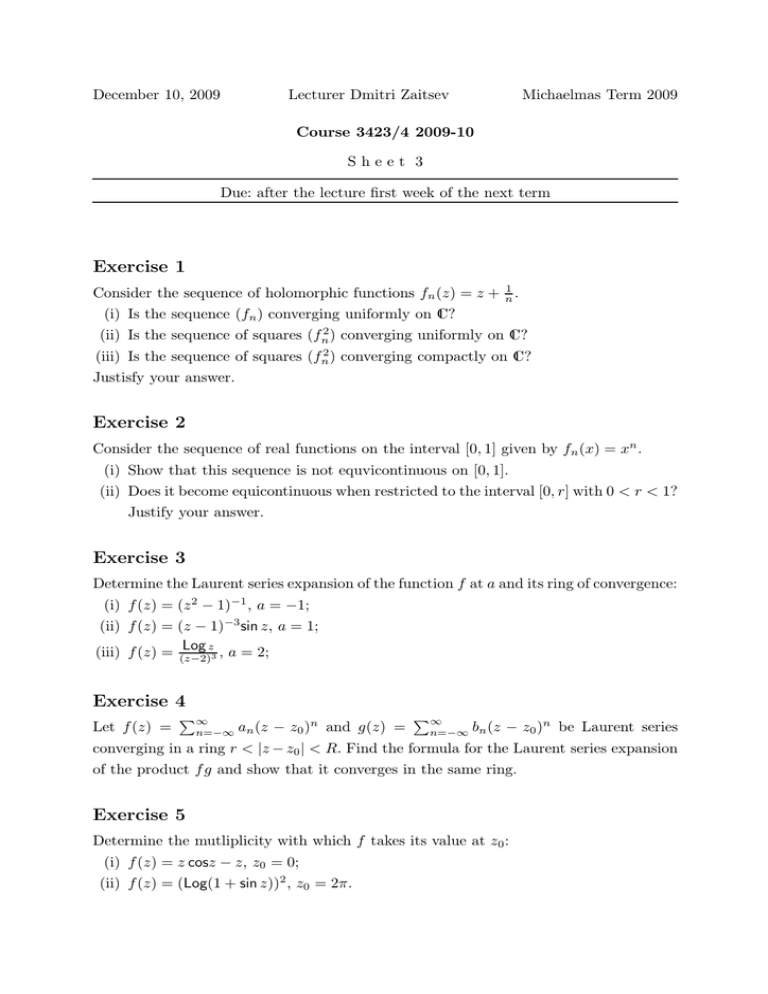
December 10, 2009
Lecturer Dmitri Zaitsev
Michaelmas Term 2009
Course 3423/4 2009-10
Sheet 3
Due: after the lecture first week of the next term
Exercise 1
Consider the sequence of holomorphic functions fn (z) = z + n1 .
(i) Is the sequence (fn ) converging uniformly on C?
(ii) Is the sequence of squares (fn2 ) converging uniformly on C?
(iii) Is the sequence of squares (fn2 ) converging compactly on C?
Justisfy your answer.
Exercise 2
Consider the sequence of real functions on the interval [0, 1] given by fn (x) = xn .
(i) Show that this sequence is not equvicontinuous on [0, 1].
(ii) Does it become equicontinuous when restricted to the interval [0, r] with 0 < r < 1?
Justify your answer.
Exercise 3
Determine the Laurent series expansion of the function f at a and its ring of convergence:
(i) f (z) = (z 2 − 1)−1 , a = −1;
(ii) f (z) = (z − 1)−3 sin z, a = 1;
Log z
(iii) f (z) = (z−2)3 , a = 2;
Exercise 4
Let f (z) =
P∞
n=−∞
an (z − z0 )n and g(z) =
P∞
n=−∞ bn (z
− z0 )n be Laurent series
converging in a ring r < |z − z0 | < R. Find the formula for the Laurent series expansion
of the product f g and show that it converges in the same ring.
Exercise 5
Determine the mutliplicity with which f takes its value at z0 :
(i) f (z) = z cosz − z, z0 = 0;
(ii) f (z) = (Log(1 + sin z))2 , z0 = 2π.
2
(iii) f (z) = (1 + z 2 − ez )2 , z0 = 0.
Exercise 6
Determine the type of singularity (removable, pole, essential or not isolated):
z
at z0 = −π;
(i) f (z) = sin
z+π
(ii) f (z) = cosz−1 at z = 0;
z2
2 1/z
0
(iii) f (z) = z e
at z0 = 0;
z
(iv) f (z) = e1/z −1 at z0 = 0;
Exercise 7
For each function f from the previous exercise, determine a maximal open set Ω ⊂ C
such that f is meromorphic in Ω.
Exercise 8
Let Ω ⊂ C be an open set and Kn ⊂ Ω a sequence of compact subsets with ∪n Kn◦ = Ω,
where Kn◦ is the interior of Kn . Consider the associated seminorms kf kn := sup{|f (z)| :
z ∈ Kn }.
(i) Show that d(f, g) :=
P
1 kf −gkn
n 2n 1+kf −gkn
defines a metric on the space of all holomor-
phic functions on Ω.
(ii) Show that fn → f compactly in Ω if and only if d(fn , f ) → 0 as n → ∞.
